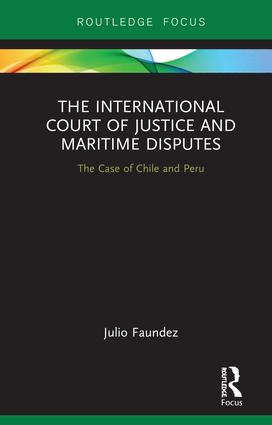Description
Shipping for this item is FREE, please allow 15 days for shipping. As its shipped from our Auckland warehouse there is no unexpected import charges, custom duties or taxes.
Condition: BRAND NEW
ISBN: 9781138343320
Year: 2018
Publisher: Taylor & Francis
Pages: 109
Description:
The origins of the maritime dispute between Chile and Peru go back to 1952, when these countries, along with Ecuador, asserted sovereignty over 200 nautical miles from their coasts. This maritime claim is widely regarded as one of the most important contributions by a group of developing countries to the law of the sea. Peru then asked the Court of International Justice to delimit its lateral boundary with Chile in accordance with principles of international law. Chile asked the Court to dismiss the request. The question before the ICJ Justice was whether the treaty concluded by the parties when they made their claim had also delimited their lateral boundary.
This book provides a critical analysis of the approach to treaty interpretation by the International Court of Justice in Maritime Disputes. Focusing on the case of Chile and Peru, the book explores two main issues: the interpretation of the Santiago Declaration and its connected treaties; and the tacit agreement that established a lateral maritime boundary with a seaward extension of 80 nautical miles. Part I argues that the Court’s finding that the Santiago Declaration did not delimit the lateral boundary is mistaken because it ignores its context, as well as its object and purpose. Part II argues that the finding that the parties had entered into a tacit agreement is an unjustified legal inference derived from a hasty interpretation of the Special Agreement of 1954. It questions that the reliability of the evidence used to determine the seaward extent of the lateral boundary and argues that the Court failed to demonstrate the bearing of contemporaneous developments in t
Condition: BRAND NEW
ISBN: 9781138343320
Year: 2018
Publisher: Taylor & Francis
Pages: 109
Description:
The origins of the maritime dispute between Chile and Peru go back to 1952, when these countries, along with Ecuador, asserted sovereignty over 200 nautical miles from their coasts. This maritime claim is widely regarded as one of the most important contributions by a group of developing countries to the law of the sea. Peru then asked the Court of International Justice to delimit its lateral boundary with Chile in accordance with principles of international law. Chile asked the Court to dismiss the request. The question before the ICJ Justice was whether the treaty concluded by the parties when they made their claim had also delimited their lateral boundary.
This book provides a critical analysis of the approach to treaty interpretation by the International Court of Justice in Maritime Disputes. Focusing on the case of Chile and Peru, the book explores two main issues: the interpretation of the Santiago Declaration and its connected treaties; and the tacit agreement that established a lateral maritime boundary with a seaward extension of 80 nautical miles. Part I argues that the Court’s finding that the Santiago Declaration did not delimit the lateral boundary is mistaken because it ignores its context, as well as its object and purpose. Part II argues that the finding that the parties had entered into a tacit agreement is an unjustified legal inference derived from a hasty interpretation of the Special Agreement of 1954. It questions that the reliability of the evidence used to determine the seaward extent of the lateral boundary and argues that the Court failed to demonstrate the bearing of contemporaneous developments in t

